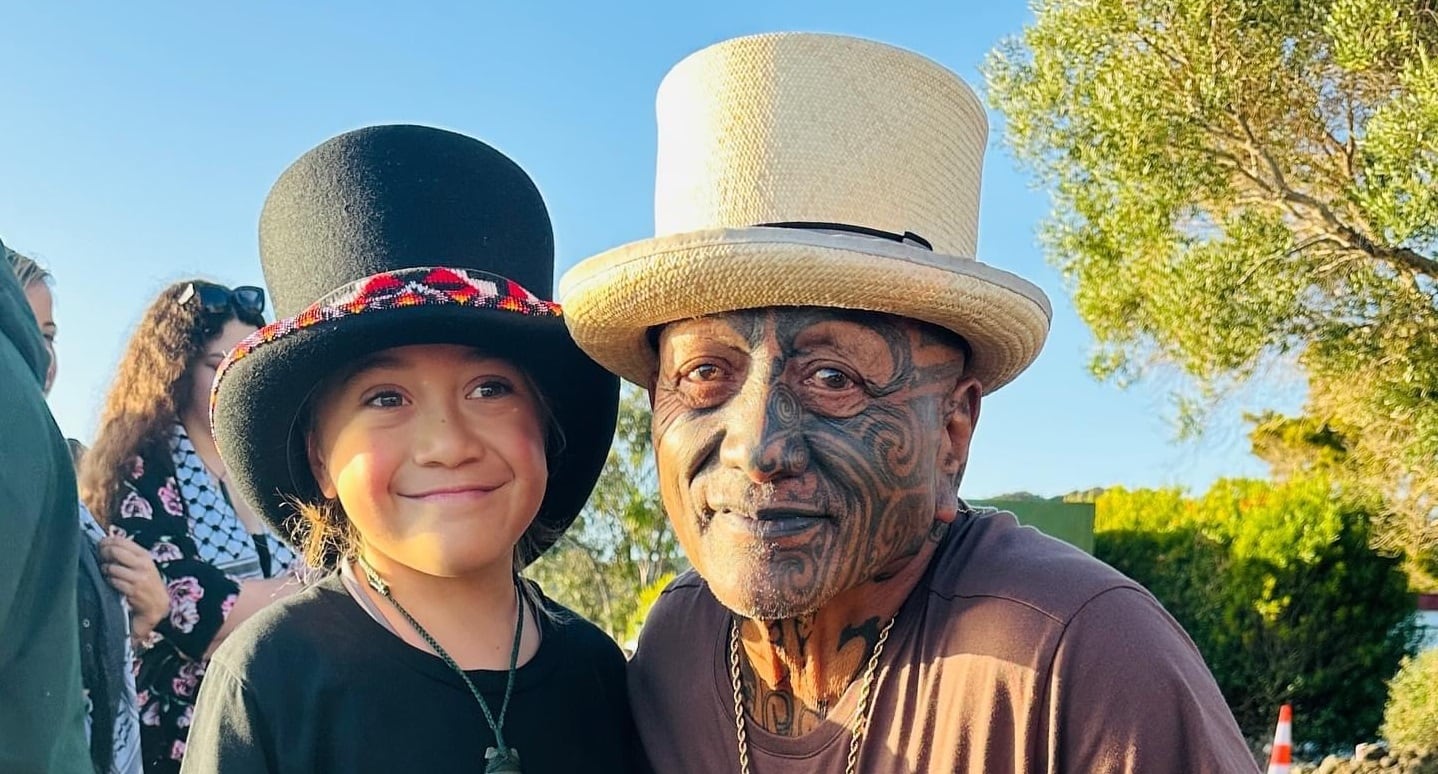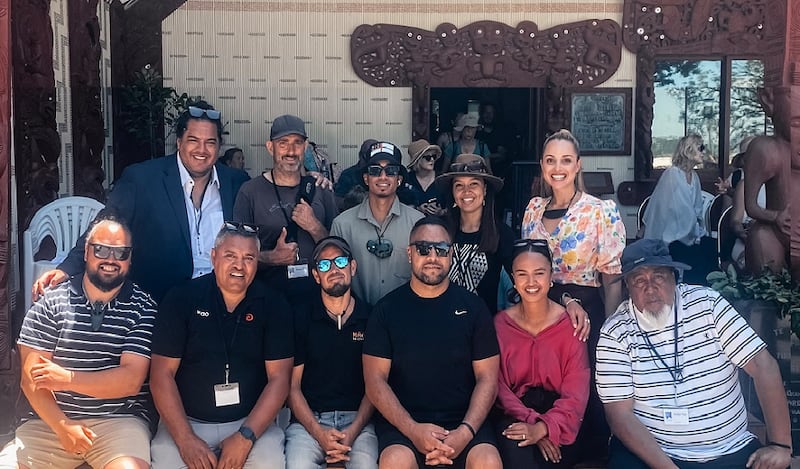Te Ao Māori News and Aukaha reporters, camera operators and crew have described their week as electrifying, thought-provoking, and made them feel proud to be Māori.
Over the past five days they’ve reached hundreds of thousands of viewers across Whakaata Māori and on social media highlighting the best moments on the ground at Waitangi.
“Māoridom flexed its muscles at Waitangi, where this new coalition government was put on notice,” Presenter Tūmamao Harawira says .
Harawira left a lasting impression on viewers and was even nicknamed “Tūmanako” by people watching because of the great entertaining mahi he was doing.
But it was an easy job for Tūmamao, especially when it came to wrangling talent for interviews because many of them were his whānaunga, including his uncle Hone Harawira.
“It felt historic and the scenes were overwhelming. To be a part of the occasion and provide coverage of the event for the motu was truly a privilege,” he says.
Presenters Riria Dalton-Reedy and Maioha Panapa had their first time covering news from the Treaty Grounds on Waitangi Day.
Dalton-Reedy says being in Waitangi on Waitangi Day is something she’s had on her bucket list since she was a teenager.
“My first time at Waitangi was an experience I’ll never forget - both as a spectator and a journalist,” Dalton-Reedy, from Ngāti Porou and Ngāpuhi, says.
“The wairua was electrifying, the kōrero thought-provoking and the wānanga conveyed the deepest matters on the hearts of te iwi Māori.”
Even though Dalton-Reedy and Panapa are on their work placements as Te Rito Journalism cadets, they’re proving to be high-achieving journalists after also presenting live news shows at three of the most important events for Māoridom this year; waka ama sprint nationals, the hui ā-motu at Tūrangawaewae and the Rātana comemmorations.
Panapa says what she saw at Waitangi “was that the future generation are fierce, unapologetic and proud to be Māori.”
“E ai ki te koorero a Te Puhi Ariki, Ngawaihonoitepo Paki - Ko taa maatou he whakatinana i taa raatou kaaore e whakatinana. Since day one, I saw the embodiment of this quote on the grounds of where He Whakaputanga and Te Tiriti o Waitangi were signed,” Maioha.
“From a little boy dressed up as his favourite idol, Tame iti, asking for a photo with his hero. To young MPs like Hana-Rawhiti Maipi-Clarke leading forum discussions about preparing the pathways for more youth to be at the forefront.”

The Waitangi broadcasts were extra special this year because they were done in collaboration with Rotorua-based regional news service Aukaha.
Aukaha kaihautū, producer and presenter Kereama Wright said working at Waitangi made him feel “proud of te iwi Māori”.
“This Waitangi showed a maturing of the people. Despite the anti-Māori sentiments from the coalition government and the perceived attacks on Te Tiriti o Waitangi and te reo Māori, our people heeded the calls of te kotahitanga issued by Kīngi Tuheitia at Tūrangawaewae and Rātana before bringing that mauri to Waitangi.”
Reporter Jess Tyson, from Te Ātihaunui a Pāpārangi, wore many hats this week, working as content creator, photographer and camera operator.
“A highlight for me was being there during each pōwhiri to witness our people in action, performing haka, doing wero, arriving in hundreds during hīkoi and being able to listen first hand to the fierce kōrero from our iwi leaders and experts, especially the wāhine who spoke at Te Whare Rūnanga,” she says.
“It’s been exciting and an honour to create content for hundreds of thousands of people who weren’t able to be there in person, to experience Waitangi Day at Waitangi from anywhere around the motu.”
But some of the true heroes of the week were the camera operators, David Graham, Amos Ngaia, Ginés Pastor Espuch and Norton Isaac who stood for hours filming the best moments at Waitangi, as well as all of the kaimahi behind the scenes.

